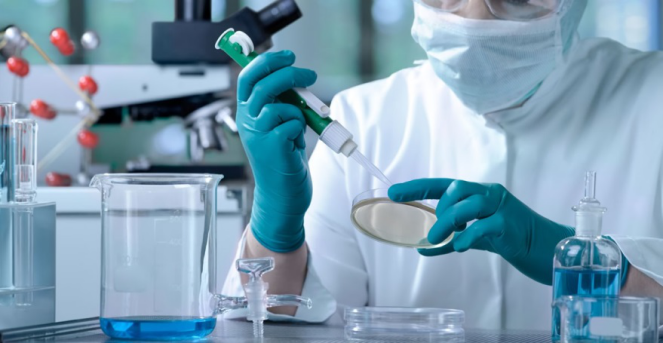Cotton has lost potassium must be known
Recently, the author went to Shajing Village in Duogang Town, Xiaonan District, Xiaogan City, Hubei Province, Shengzhai Village, Hujindian Town, Yunmeng County, and cotton fields of some cotton farmers in Dongxihu District of Wuhan City to investigate cotton production. Early development of cotton seedlings has been characterized by a lack of potash fertilizers. In particular, cotton fields with low soil organic matter content and high sediment content, and some newly expanded leaves of cotton seedlings have apparently lacked the symptoms of potassium. When asked what brand of potassium they had been used, they replied that it was not clear.
In the era of large-scale planting of conventional cotton, farmers do not care about the application of potash fertilizer to grow cotton. They can enter the transgenic insect-resistant cotton, especially after the large-scale promotion of transgenic hybrid insect-resistant cotton, the contradiction of cotton potassium deficiency becomes increasingly prominent. In order to increase farmers' awareness of the use of potash fertilizer, the following issues should be noted.
The symptoms and harms of potassium deficiency are as follows: The new leaves and veins remain green, and yellow and white petiole appear in the leaves. There are red-brown and red-brown spots around the leaf margins. The spots gradually enlarge and sometimes perforate, the leaf margins turn over, and the leaves dry off later. The proportion of red stems is larger, the stems are smaller, the root volume is less, the boll expansion is insufficient, the boll weight is reduced, and the bolling is not smooth. Second, the transgenic hybrid insect-resistant cotton has a large demand for potassium fertilizer, and the conversion is slower and it is more likely to show symptoms of potassium deficiency. Third, potassium deficiency can easily lead to diseases such as stem blight, leaf blight, and leaf blight. Although it is a physiological disease, it may have a large impact on the yield. Insufficient potash fertilizer can often reduce the production of cotton by 20% to 30%. .
The potassium content of various fertilizers is in organic fertilizers. The content of potassium oxide in human excreta is 0.2%-0.3%, the content of potassium oxide in pig manure is 0.44%, the content of potassium oxide in cattle manure is 0.15%, and the oxidation of chicken manure Potassium content is 0.9%, duck manure potassium oxide content is 0.6%, the crop stalk dry matter, the general content of potassium oxide is about 1%, the highest corn stalk is 2.28%, the lowest barley glumes is 0.28%. Garbage is 2.29%. In chemical fertilizers, the content of high-content compound fertilizer potassium oxide is generally 15% to 16%, equivalent to 12.5 ~ 13.45 kg of potassium chloride or potassium sulfate. For the transgenic insect-resistant cotton, 25-30 kg of potassium chloride or potassium sulfate is often used per acre.
Correct identification of potash potassium chloride as white or light brick red crystals, slightly hygroscopic. Pure potassium sulphate is a white crystal, and the commercial fertilizer is grayish yellow, grayish green or light brown and does not absorb moisture. The two types of potassium do not melt when burned, there is a cracking sound, and a purple flame of potassium ion can be observed. They are all soluble in water. Inferior potash fertilizer is insoluble in water, mostly red brick or broken stone foam, should be carefully identified when purchasing.
Reasonable application of potassium fertilizer to adjust the formula General conventional cotton N, P, K ratio of three elements is often 1:0.3:0.5, planting transgenic insect-resistant cotton should be adjusted to 1:0.3:0.9 to 1. At present, cotton should be combined with bud stage fertilizers. First, in the conditional farmers, try to apply some organic fertilizers made from stalk stalks; second, use more compound fertilizers with high potassium content, and add 10 to 15 kg. Potassium fertilizer; Third, with deep potash fertilizer applied to the cultivator, it should not be applied to the soil surface.
Active Pharmaceutical Ingredient (API)
Active Pharmaceutical Ingredient (API)
We are a manufacturer and supplier of raw materials, intermediates for pharmaceuticals, as well as Active Pharmaceutical Ingredient (API). Our focus is on providing customers with high quality, fair priced products, coupled with our broad range of technical know-hows on fundamentals, vast industrial experience on applications, professional expertise on health and safety, and efficient logistics on customer services. We have established good market for our intermediates in India, Korea and EU. Besides of their intermediates, we can also synthetize the API directly. We also have some API by fermentation, Polymyxin B Sulfate is one of them and we are developing more APIs as well.
Our production is based on GMP standard workshop, according to international Pharmacopoeia standard, making sure your experience with Sunshine Biotech is always enriching, satisfying and fulfilling.

Active Pharmaceutical Ingredient,Polymyxin Sulfate,Ziprasidone Hcl,Polymyxin Sulphate
Nanjing Sunshine Biotech Co., Ltd , https://www.sunshine-bio.com